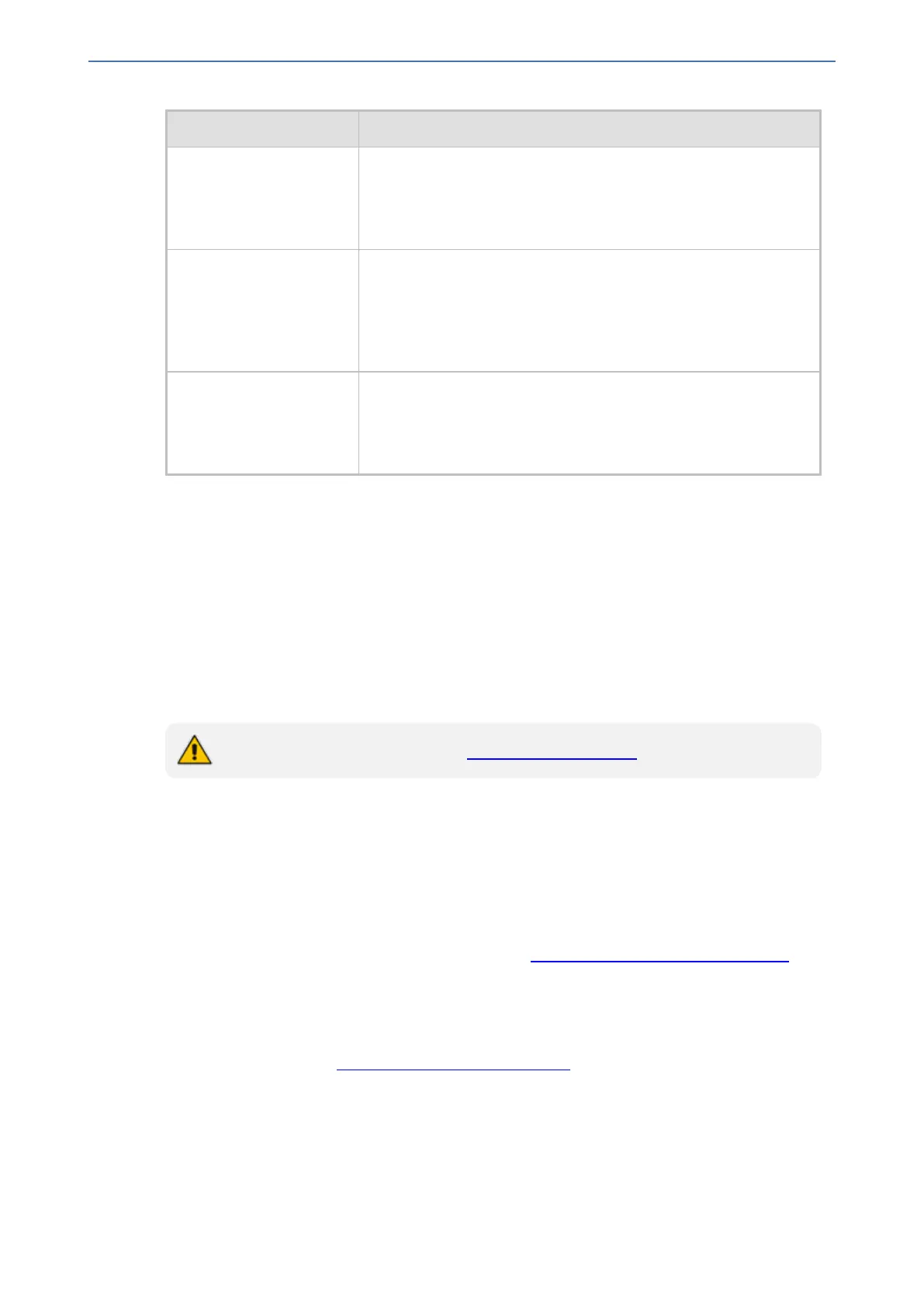CHAPTER16 Services
Mediant 1000 Gateway & E-SBC | User's Manual
Parameter Description
'End Time'
end-time
[CostGroupTimebands_
EndTime]
Defines the day and time of day until when this time band is
applicable. For a description of the valid values, see the parameter
above.
'Connection Cost'
connection-cost
[CostGroupTimebands_
ConnectionCost]
Defines the call connection cost during the time band. This is
added as a fixed charge to the call.
The valid value range is 0-65533. The default is 0.
Note: The entered value must be a whole number (i.e., not a
decimal).
'Minute Cost'
minute-cost
[CostGroupTimebands_
MinuteCost]
Defines the call cost per minute charge during the time band.
The valid value range is 0-65533. The default is 0.
Note: The entered value must be a whole number (i.e., not a
decimal).
Assigning Cost Groups to Routing Rules
To use your configured Cost Groups, you need to assign them to routing rules:
■ Gateway application: Tel-to-IP Routing table - see Configuring Tel-to-IP Routing Rules on
page582
■ SBC application: IP-to-IP Routing table - see Configuring SBC IP-to-IP Routing on page771
Remote Web Services
This section describes configuration for remote Web services.
To debug remote Web services, see Debugging Web Services.
Configuring Remote Web Services
The Remote Web Services table lets you configure up to seven Web-based (HTTP/S) services
provided by third-party, remote HTTP/S hosts. The following types of services can be offered by
the remote host:
■ Routing: Call routing service, whereby the remote host (e.g., routing server) determines the
next hop of an incoming call on the path to the final destination. For more information on
employing a third-party, remote routing server, see Centralized Third-Party Routing Server.
■ Call Status: Call status of calls processed by the device. The call status is provided to the
remote host through CDRs sent by the device.
■ Topology Status: Status of device configuration (add, edit and delete). The device sends
topology status to the HTTP host, using the REST TopologyStatus API command. To enable
the functionality, see Enabling Topology Status Services. Topology status includes the
following:
● IP Group Connectivity: Status is reported when the keep-alive mechanism, enabled for the
associated Proxy Set, detects that the IP Group is unavailable, or when CAC thresholds
(configured in the Admission Control table) associated with the IP Group are crossed.
● Trunk Group Availability: Status is reported when the trunk's physical state indicates that
the trunk is unavailable. (Applicable only to the Gateway application.)
- 243 -

